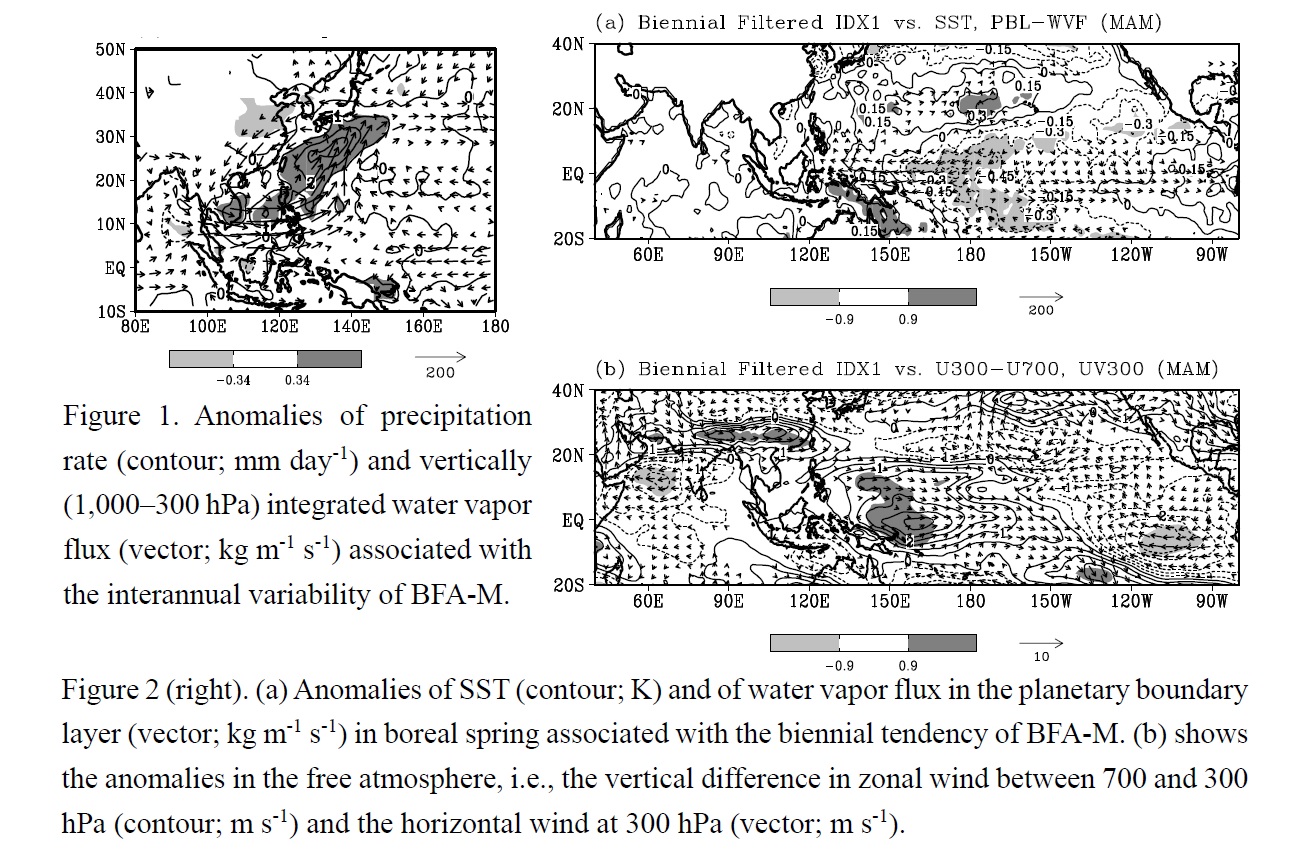Graphical Abstract
Tomita, T., and T. Yamaura, 2020: Interannual variability of Baiu frontal activity in May and its connectivity with June. J. Meteor. Soc. Japan, 98, 329-351.
https://doi.org/10.2151/jmsj.2020-018
Graphical Abstract
Plain Language Summary:
The Baiu front (BF) is climatologically formed in May in the western North Pacific. This study investigated the interannual variability of Baiu frontal activity (BFA) in May (BFA-M) and its connectivity with June. First, an anomalous circulation centered around Taiwan, which is interpreted as a moist Rossby wave from the equatorial Kelvin–Rossby wave packet, controls the interannual variability with modifying southerlies from the tropics (Fig. 1). Second, a biennial tendency characterizes the interannual variability of BFA-M with a tripole SSTA pattern and anomalous Walker circulations in the tropical Pacific (Fig. 2), both of which are suitable for confining the disintegration of the equatorial Kelvin–Rossby wave packet in the western Pacific and guiding the northwestward propagation of the moist Rossby wave. With the phase reversal of this moist Rossby wave, the biennial tendency remains in the western part of the BF from May to mid-June.
Highlights:
- An anomalous large-scale circulation centered around Taiwan, which is identified as a moist Rossby wave, modifies BFA-M.
- The moist Rossby wave is emanated from the equatorial Kelvin–Rossby wave packet in the western Pacific.
- A biennial tendency characterizes the interannual variability of BFA-M with a tripole SSTA pattern and corresponding anomalous Walker circulations in the tropical Pacific.







